
It’s time to get those seedlings planted in the garden. Whether you’ve spent the past few months growing them yourself or picked up some starter packs at the local nursery, now is the time to get them in the ground.
Hold on! Before you plunk a single seedling in the dirt, don’t miss out on this once-per-season opportunity.
Most gardeners focus on care and fertilization once everything has been planted. But if you simply poke your small seedlings in the ground, you’re missing out on the chance to give them an extra boost that will carry them through the entire growing season.
Don’t forget to put a little something extra in those holes you dig for your transplants.
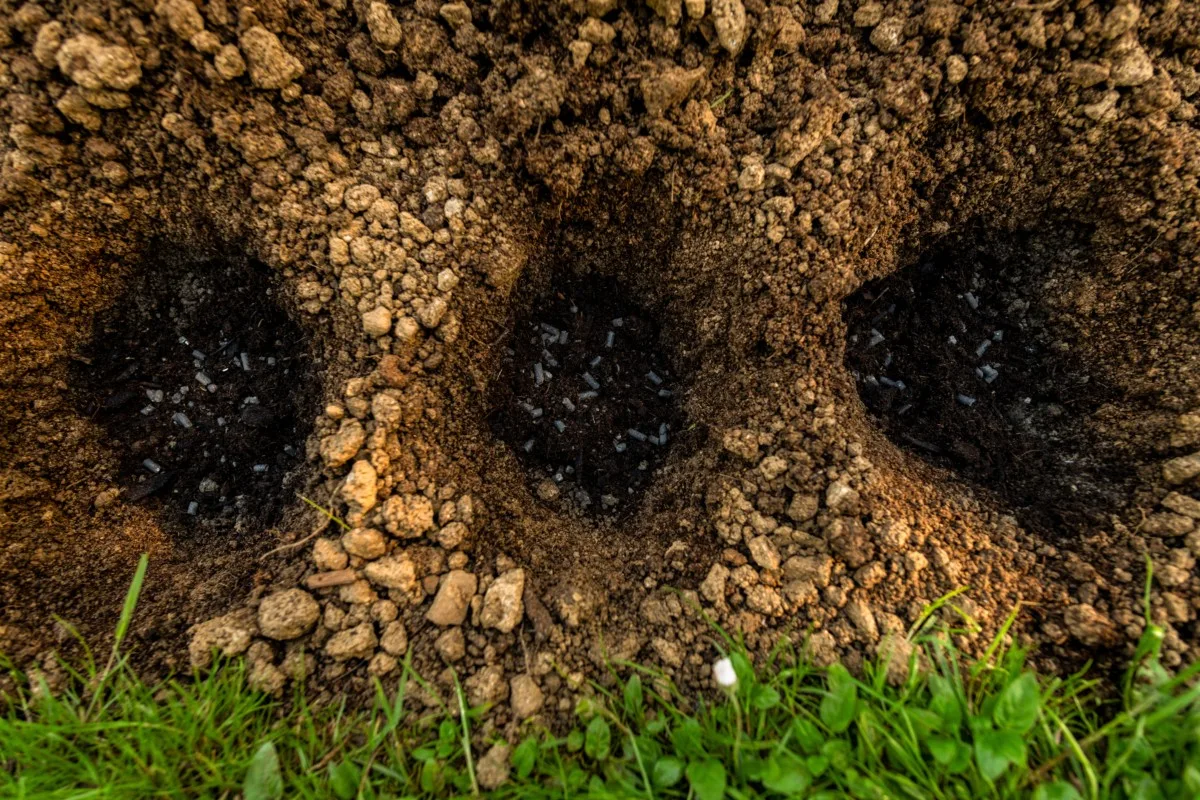
Adding soil amendments directly to the hole you’re about to put your seedlings in has multiple benefits that can last until it’s time to close the garden down in fall.
Amending Planting Holes Can:
- Provide an instant fertilizer boost to new transplants, helping them get established quicker
- Prevent or alleviate transplant shock quicker
- Protect against certain pests and diseases
- Correct soil pH problems right where your plant is growing
- Make plants more drought resistant
- Dispense a slow-release fertilizer right where the plant needs it most
- Make nutrients in the soil easier for plants to absorb, making them more readily available
- Correct leggy seedlings
And the best part is, it only takes a scoopful of this and that and a couple of extra minutes to start your garden with a massive boost. (Plus, your neighbors will be wondering why you’re harvesting zucchini a week before them and why your tomato plants have double the fruit than theirs.)
Prepping Seedlings for Transplant
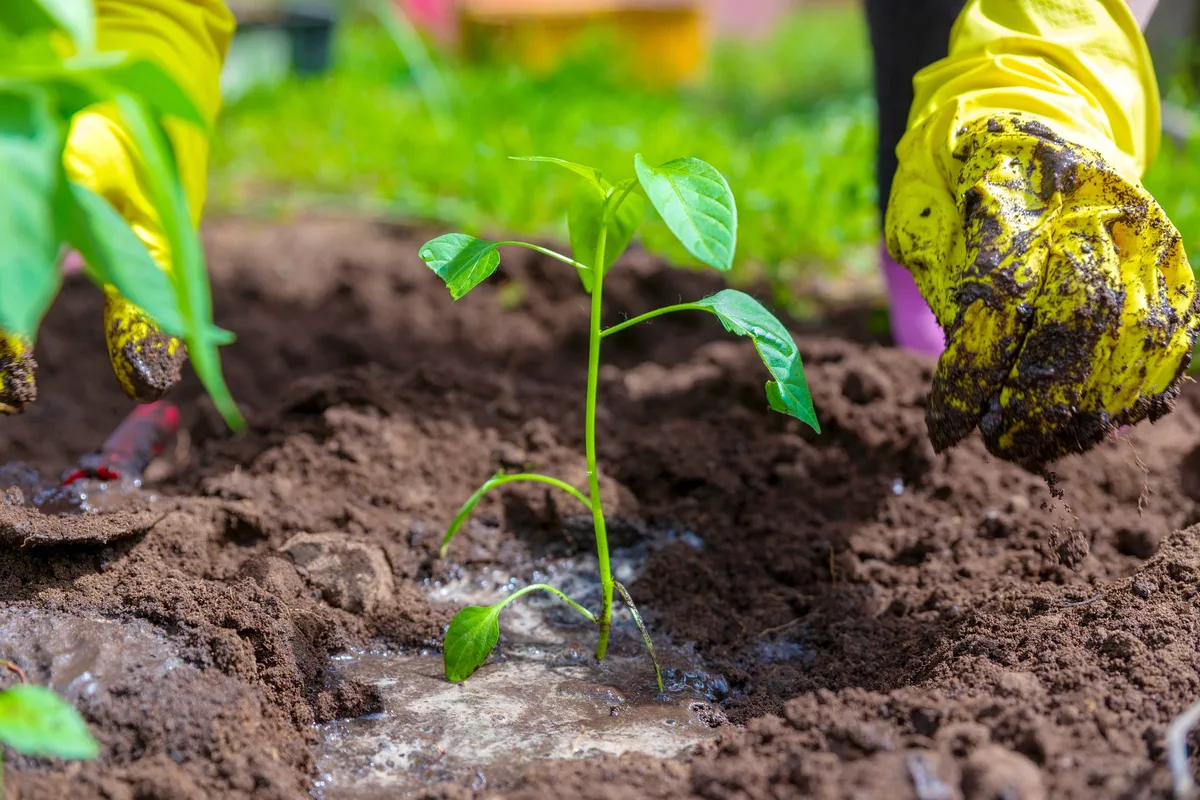
Naturally, you want to give your tiny plants the best start to the growing season possible. And that starts even before they make it into the garden. I can’t stress enough the importance of hardening off your plants before putting them in the ground.
This is probably the most important thing you can do to prevent transplant shock. And remember, the longer it takes for your plants to recover, the longer it takes before they start producing. To make their transition from sunny windowsill to the great outdoors as smooth as possible, take the few extra days needed to harden them off.
Ideally, the day you transplant shouldn’t be decided on a whim. Certain aspects should be considered – weather for the next week, time of day, etc.
If you want to give your transplants the best start possible, check out our guide covering how to successfully transplant seedlings outside.
It’s Just a Hole in the Ground
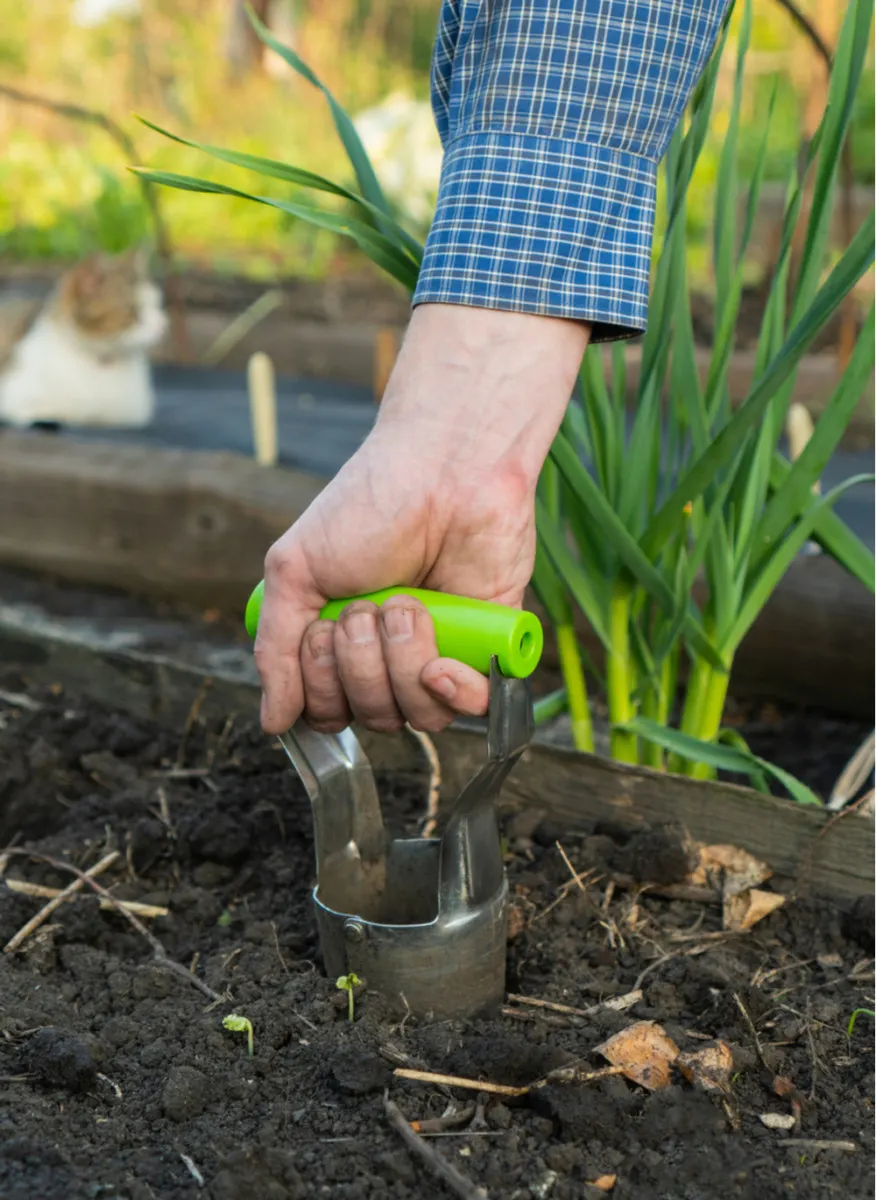
This year, we will think differently about each hole you dig to place tender tomato, summer squash, pepper, and eggplant seedlings into the ground.
Oh sure, it’s easy to think of it as just a hole in the ground. But the holes you dig have the potential to provide your plants with the benefits listed above. It’s generally known that adding a bit of compost to each of these holes is good practice, but there are many other great soil amendments to add.
Let’s look at some of the best soil amendments to add to those holes in the ground before you plant your seedling. And we’ll talk about the benefits of each and which plants need each one. It’s always good to test your soil before amending it, so you have a clear picture of where it is deficient or what pH concerns you have.
1. Compost
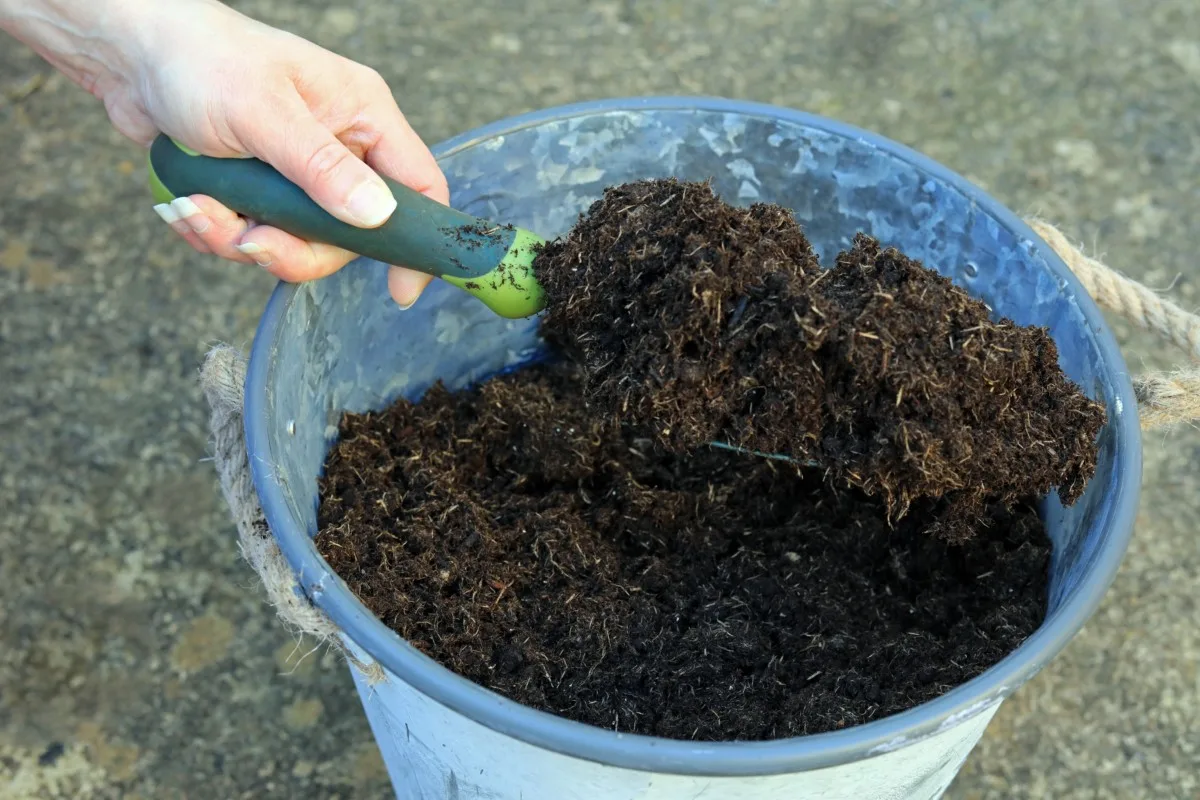
As I mentioned above, compost is everyone’s go-to soil amendment when planting transplants. And if you only add one thing to the hole you dig for your transplant, it’s hard to beat good ol’ compost.
However, compost should be looked at more as a soil improver than a fertilizer. While it does contain all of the nutrients in the plant care holy trinity – nitrogen, potassium, and phosphorous, they are only present in trace amounts and released slowly over the season. Adding compost improves your soil slowly by adding organic material, which breaks down over time.
If you need compost quickly, give the Berkeley composting method a try and have compost ready in only two weeks.
2. Leaf Mold
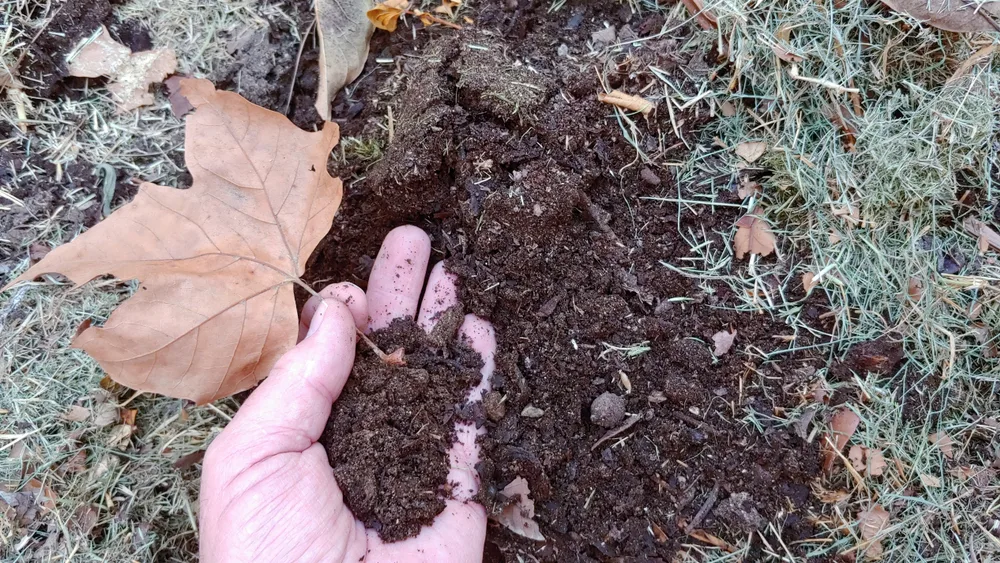
Leaf mold is used in much the same way as compost – to improve the quality and structure of your soil over time. It’s as easy to make in your backyard as compost and answers the question each fall, “What are we going to do with all of these leaves?”
By letting leaves molder for a year or two, they break down into a carbon-rich matter that will further decompose in the soil. Adding a healthy dose of leaf mold to your transplant hole helps your plants retain moisture and provide micronutrients as it breaks down. Not to mention it’s great for the microbiome below the ground.
Related Reading: How To Make Leaf Mold: Turn Fallen Leaves Into Gardener’s Gold
3. Worm Castings
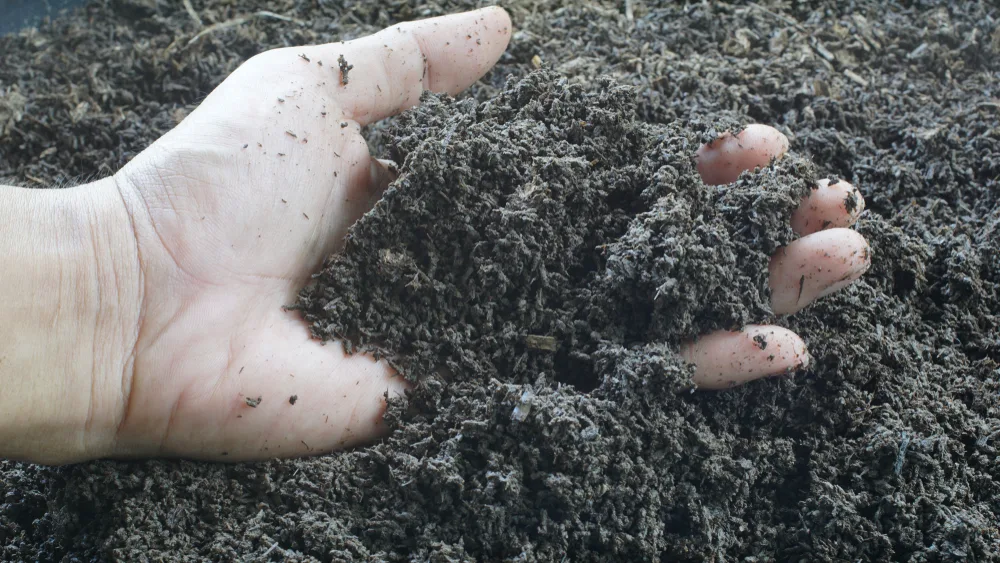
Where do I begin to extoll the magical virtues of worm poop? You’d be hard-pressed to find a better soil amendment. And the world, in general, is catching on. I saw earthworm castings in the garden center at Walmart this year, so that’s a pretty good indicator of their popularity among gardeners.
It’s easy to see why too. Worm castings do a lot for your soil. Scientists have been studying the benefits of these teensy pellets for quite a while now and what they’ve found is good news. Adding worm castings to your soil improves your plant’s drought resistance by holding more moisture in place in the soil. They also provide better soil structure, creating tiny air pockets in the soil. They hold soil nutrients in place that would otherwise be washed away by rain or watering your garden.
The benefits aren’t just good for the soil; worm castings provide a low dose of slow-release nutrients. And naturally occurring compounds in the castings prevent root rot and stop aphids, spider mites, and other small, soft-bodied insects by drying out the pests, causing them to die.
4. Mycorrhizae
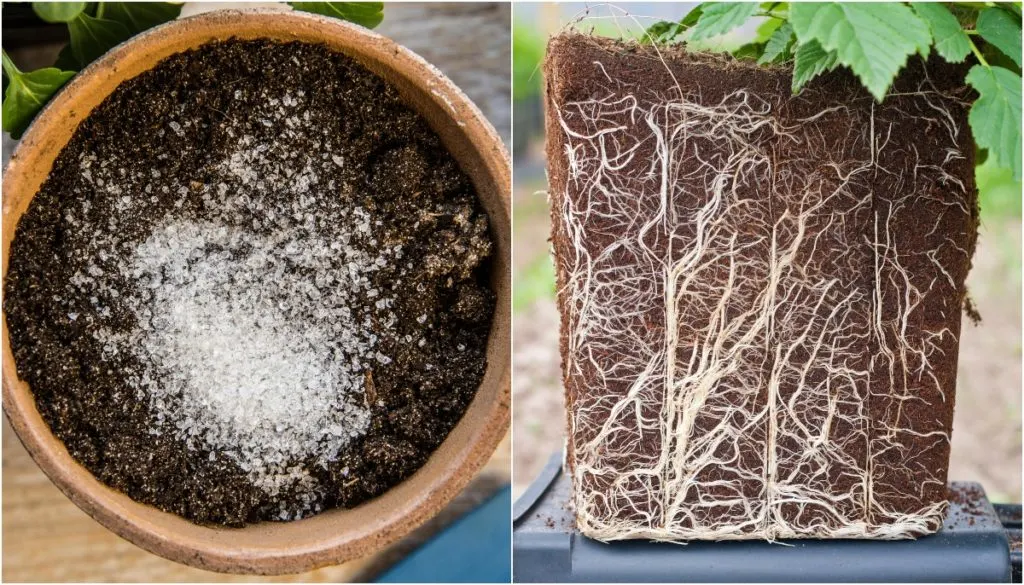
If I had to choose only one thing on this list to add to the ground before I set my seedling in it, mycorrhizae would be it. (My kids will tell you that’s because I’m obsessed with mushrooms.) Out of all the things I’ve tried in my garden over the years, I’ve seen the most dramatic results with mycorrhizae.
What is it?
Mycorrhizae are beneficial fungi that occur naturally in the soil. If left to their own devices, they work together with the plants around them in a symbiotic relationship. These fungi will adhere to the tiny roots of your plant and grow significantly (sometimes as much as 100%) increasing your plant’s root system. This larger root system creates more surface area allowing your plant to take in more nutrients and be less affected by periods of drought.
The mycorrhizae also “predigest” the nutrients available in the surrounding soil, making them readily available to your plants. All of this equates to larger, healthier plants that are more resistant to disease, pests and droughts. Did I mention you will also see bigger yields thanks to those extra nutrients?
Unfortunately, these delicate underground systems are destroyed when we till and dig up the ground year after year. This means our garden plants don’t receive the same benefits that a common blade of grass in your yard does. However, you can purchase commercially available mycorrhizae blends and ‘innoculate’ each seedling just before planting.
Although there are a few exceptions, nearly anything with a root system will benefit from mycorrhizae. Root crops such as potatoes, carrots, and radishes do not benefit, nor do plants in the Brassica family, cabbages, broccoli, Brussels sprouts, etc. But for amazing flowers, herbs, tomatoes, eggplants, and even houseplants, give mycorrhizae a try.
5. Blood Meal
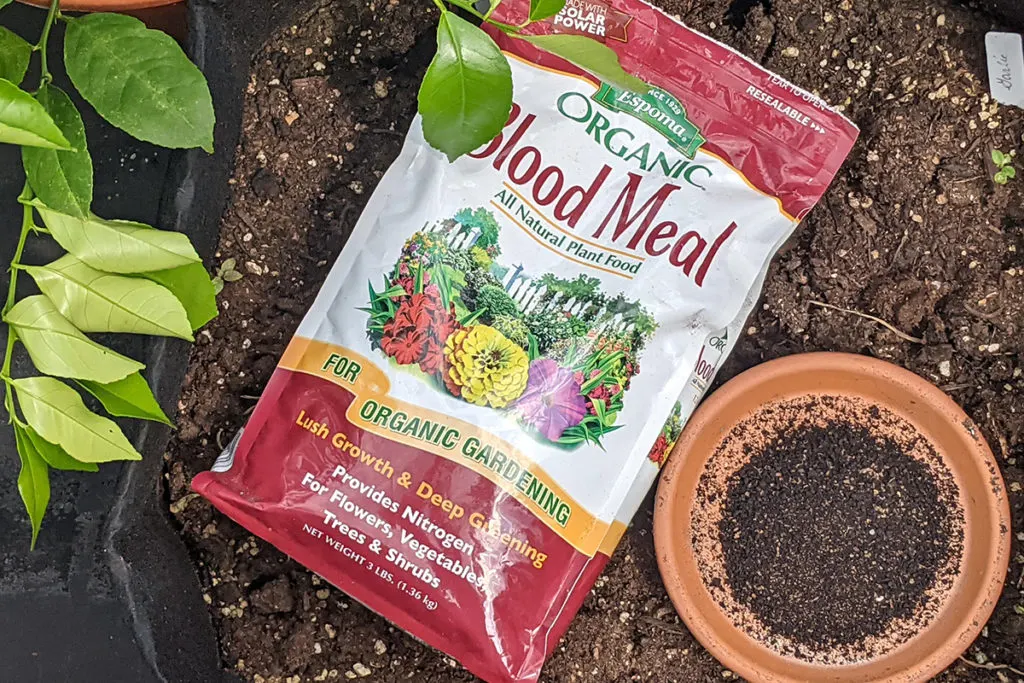
Blood meal is a more specific soil amendment, a fertilizer. And while the name may put you off, this all-natural (and often organic) fertilizer is an excellent slow-release option for plants that require a lot of nitrogen. I’m looking at you, tomatoes.
Blood meal is made from flash-frozen and then dried livestock blood. Cow blood is often the most commonly used to make this high-nitrogen fertilizer. As its only nutrient is nitrogen (12-0-0), this is an excellent fertilizer if your only soil issue is a nitrogen deficiency or if you want to dial in the nutrients you put in the soil. Using blood meal allows you to be specific for each vegetable you plant.
6. Bone Meal
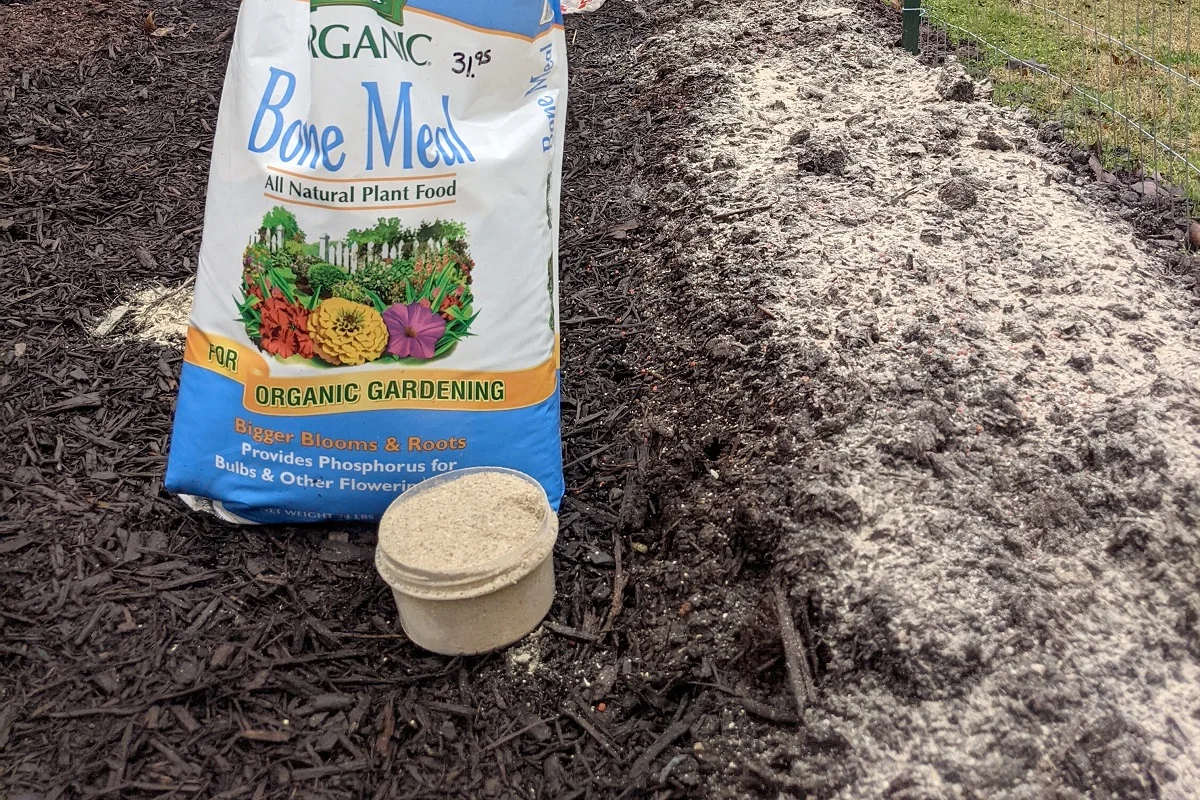
Another great natural fertilizer is bone meal. And yes, this one is made from livestock, generally beef bones. Bone meal is high in phosphorous, another key nutrient used by plants as they grow. And like blood meal, it’s almost always singular in its nutrient makeup. (Although sometimes it will have trace amounts of nitrogen.) This is another great natural fertilizer option when you want to be specific about balancing the nutrients in your soil
Blood meal also contains calcium, an important trace mineral needed to prevent blossom end rot.
Phosphorous is important for root growth, especially tubers. If you’re growing potatoes, don’t forget to add a sprinkle of bone meal in each hole before putting your seed potato in it. Phosphorous is also important for all flowering plants, so you may want to consider using it again later in the season when your plants start setting blossoms.
7. Epsom Salt
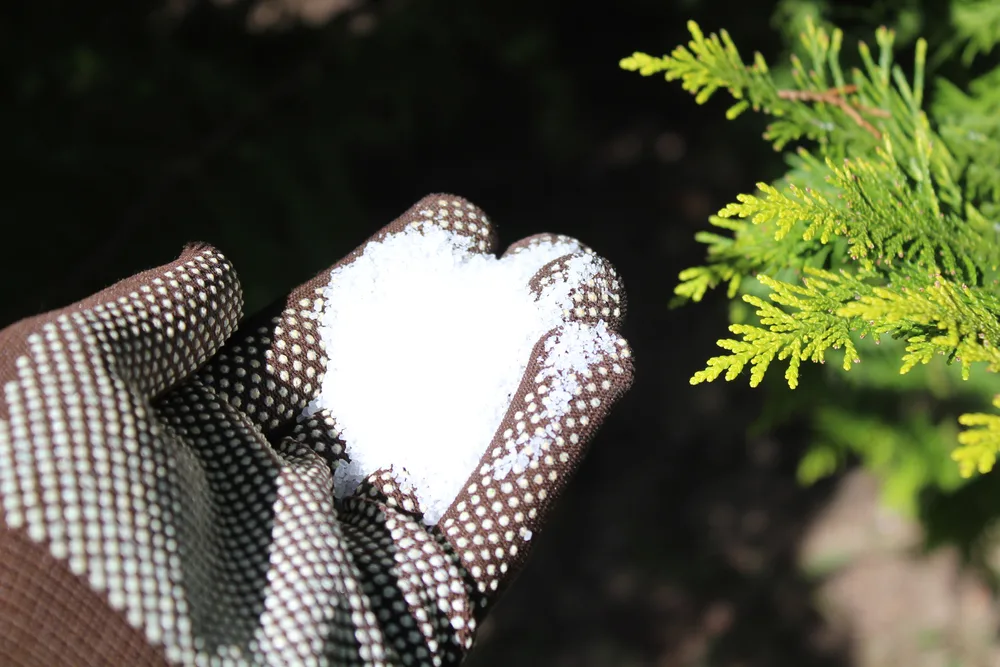
Epsom salt is a form of magnesium, which is great for new plants. Adding a tablespoon to your planting hole can help new seedlings recover from transplant shock quicker with that extra boost of magnesium. Magnesium is essential for the production of chlorophyll.
You’ll want to make sure you add a bit of magnesium to the hole you dig for each tomato, pepper and eggplant. These are all plants known for being heavy feeders, which can lead to a magnesium deficiency, especially if you fertilize with potassium.
8. Eggshells
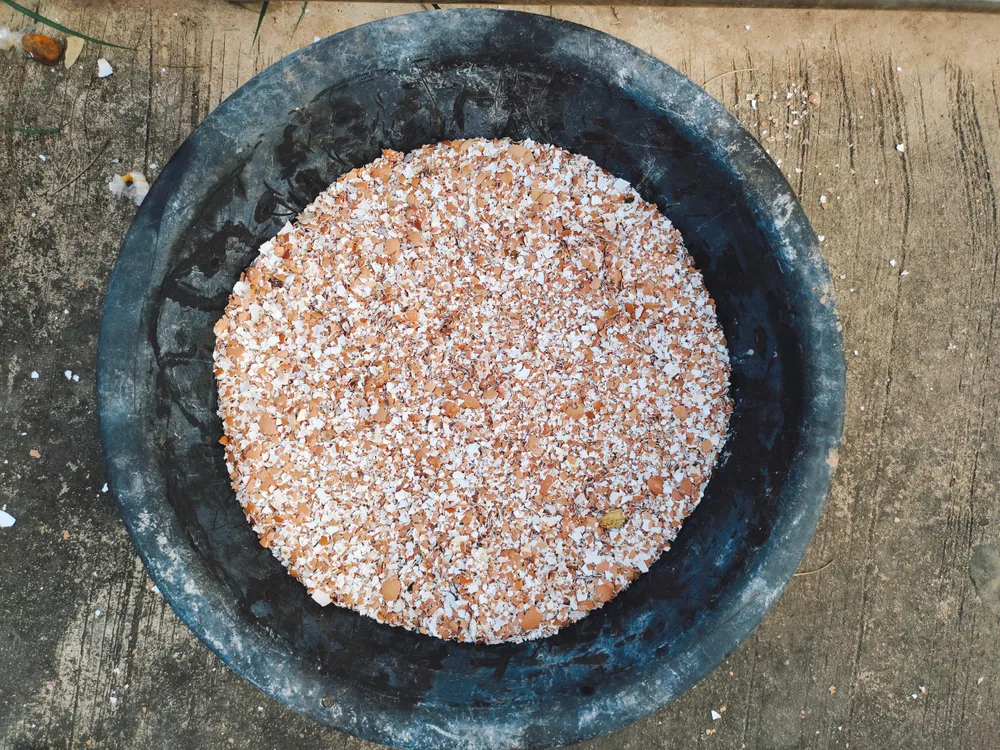
Crushed eggshells are yet another easy to come by source of calcium for your soil. Along with calcium, eggshells contain lower amounts of magnesium, potassium and phosphorus, making them a cheap fertilizer option. Eggshells can help change the pH of your soil, reducing acidity to make the soil more neutral.
Crush dried eggshells into a powder and sprinkle in the holes of seedlings that bloom to produce fruit, like peppers, tomatoes, eggplants, and of course, flowers. However, you might wish to skip the eggshells for acid-loving plants like beans, blueberries and brassicas.
9. Wood Ash
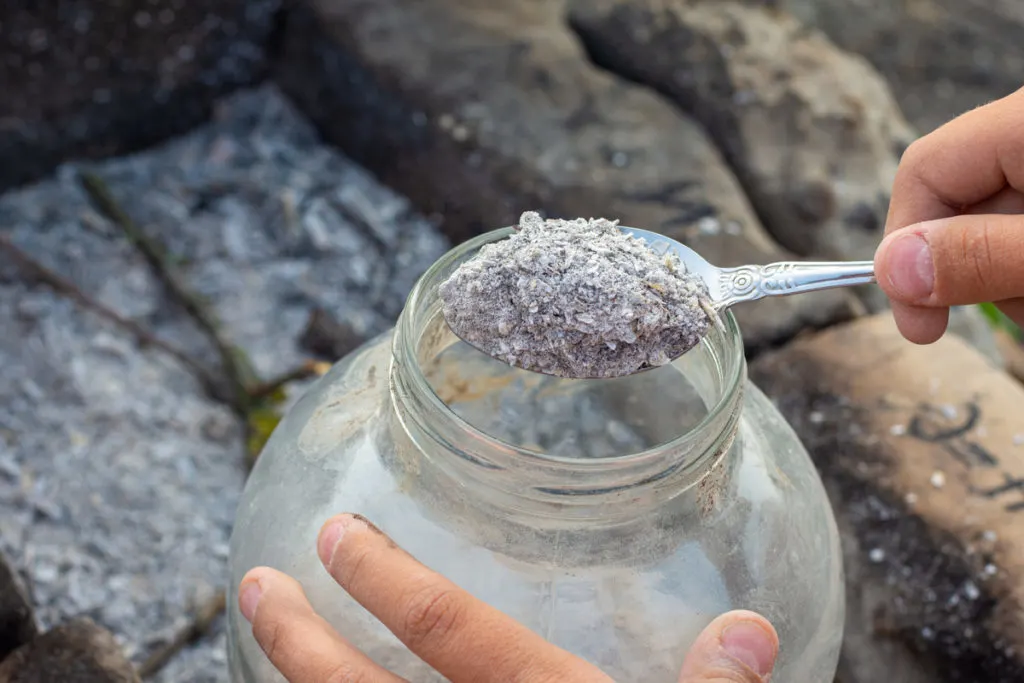
Wood ash is another great amendment to correct overly acidic soil. But the benefits of wood ash don’t stop with pH correction. Because most wood ash also contains small traces of charcoal, adding wood ash to your transplant hole will increase the surface area available for mycorrhizae and the other helpful microbes in the soil to hang out.
Much like worm castings, these tiny pieces of charcoal also keep water and nutrients right where you need them – at the plant’s roots.
Like eggshells, you should only use wood ash for plants that prefer neutral to slightly basic soil. Using wood ash for acid-loving plants could lead to slower growth.

Get the famous Rural Sprout newsletter delivered to your inbox.
Including Sunday musings from our editor, Tracey, as well as “What’s Up Wednesday” our roundup of what’s in season and new article updates and alerts.

